Due to situations beyond my control, I have had to change the project completely since the person I was going to collaborate with in this module is not available for the foreseeable future (due to illness). During this time, I was approached by actor/producer Jamie-Lee Parker, whom I have collaborated with in the past. She wanted to make a ‘mockumentary’ film in which her son, Kaleb Parker, is stuck in a trance and thinks he is a NPC (Non Playable Character), due to playing on his games console excessively. We decided to approach the film in the style of a Channel 4 ‘Dispatches’ documentary.
Documentaries are a genre of film where filmmakers investigate an issue or a subject by interviewing people or exhibiting the issue via archival/shot footage (Renov, 2007). Documentary, as a form of filmmaking, has its own genres as there are many types (or ‘modes’) of Documentary (Dormehl, 2012). There are 6 ‘modes’ in total that were the theory of Film critic/ theorist, Bill Nichols. The 6 ‘modes’ of documentary are poetic, performative, participatory, observational, expository and reflexive (Anderson-Moore, 2023, Jenkins, 2023).
We spoke over social media and email surrounding when we could film the mockumentary. The only day we could film was Monday 16th April. Jamie Lee produced the call sheet and the script for the film. I had creative input as well since I co directed the film. I am somewhat a gamer and know many niche details surrounding gaming as a hobby. We worked into the end of the script in which a video game designer tries to break Kaleb’s trance. The game designer’s name is Eddie Boon, the lead programmer of the original Mortal Kombat. I produced a risk assessment so I could ensure we were taking precautions to prevent anyone enduring injuries or equipment becoming damaged. We worked on the shot list for specific angles we felt were necessary for the visual narrative of the documentary.
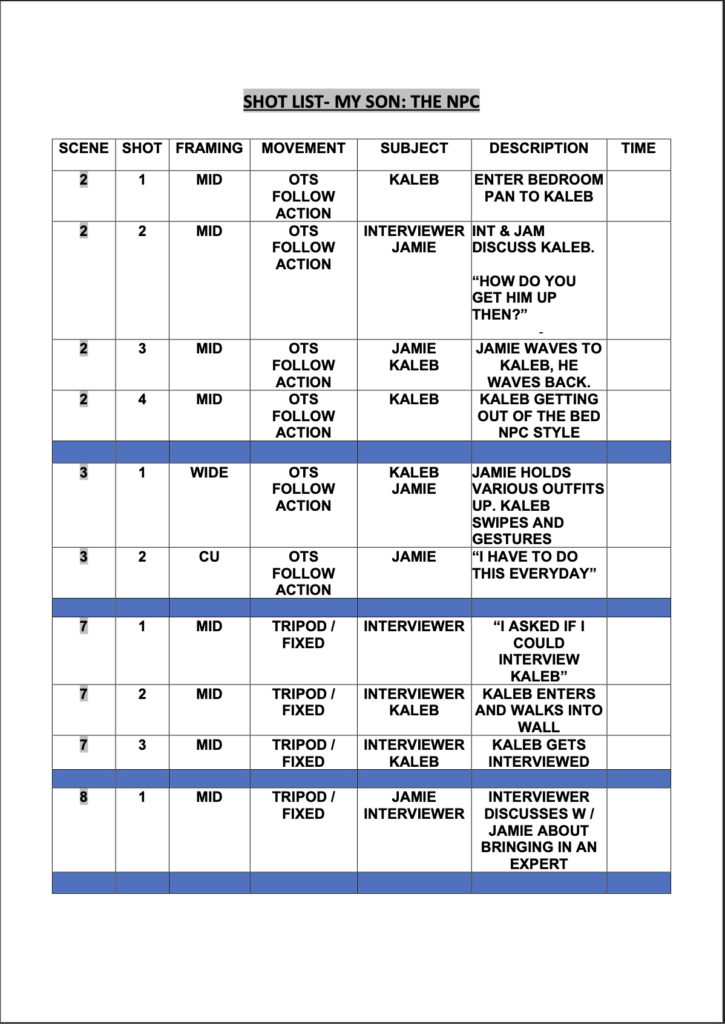
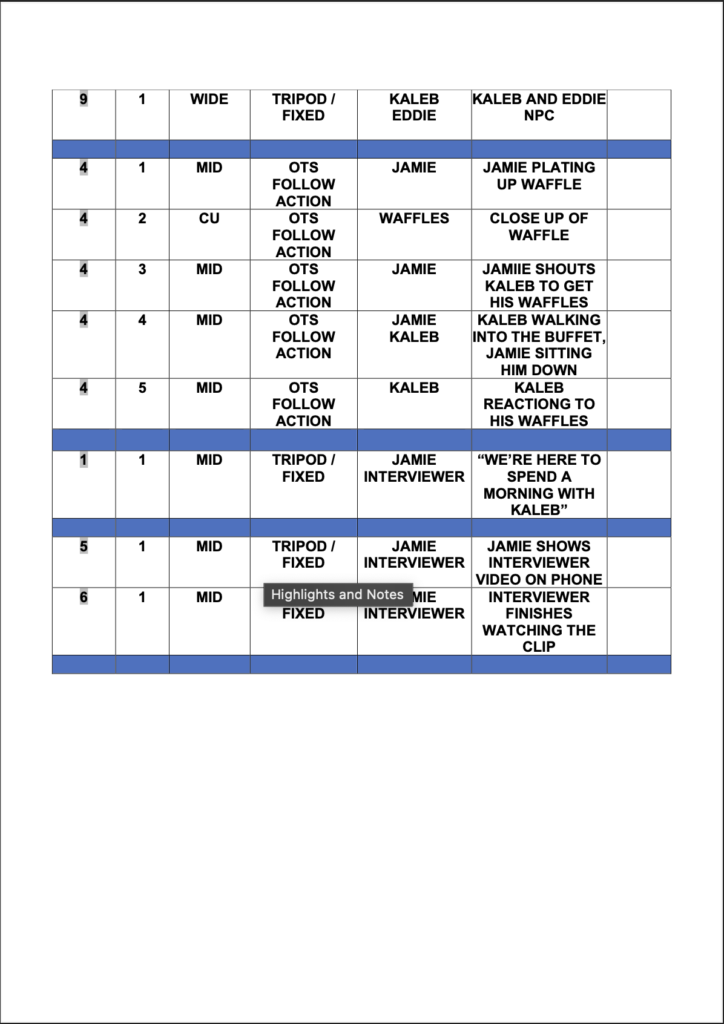
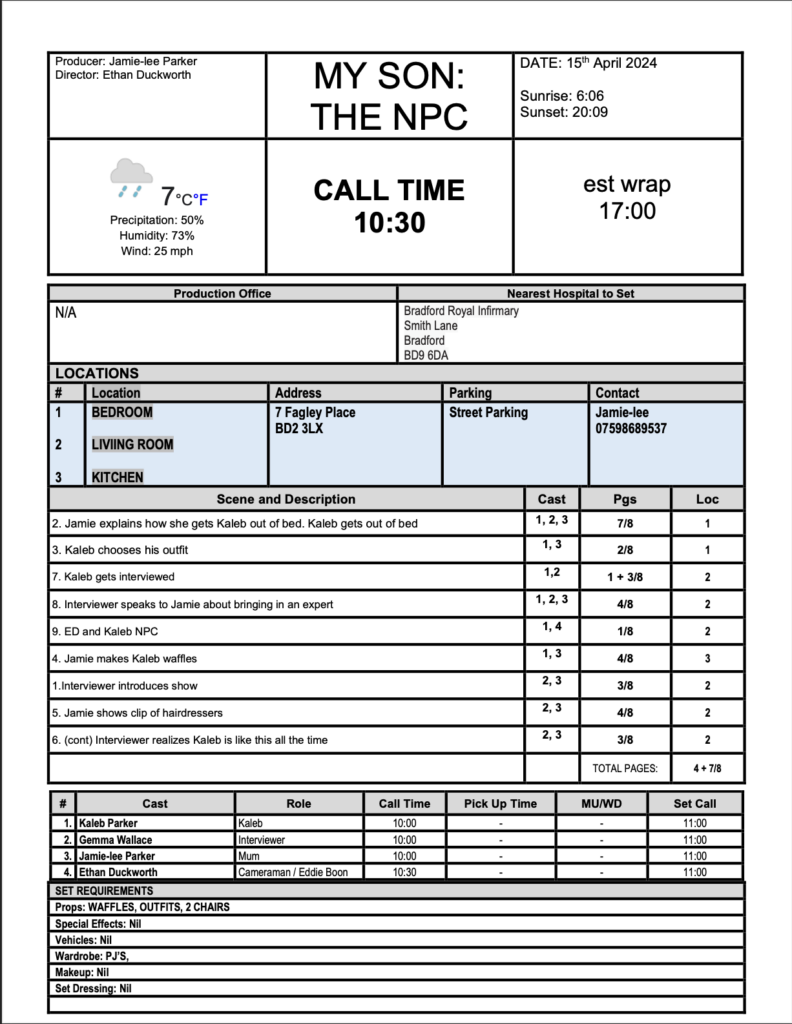
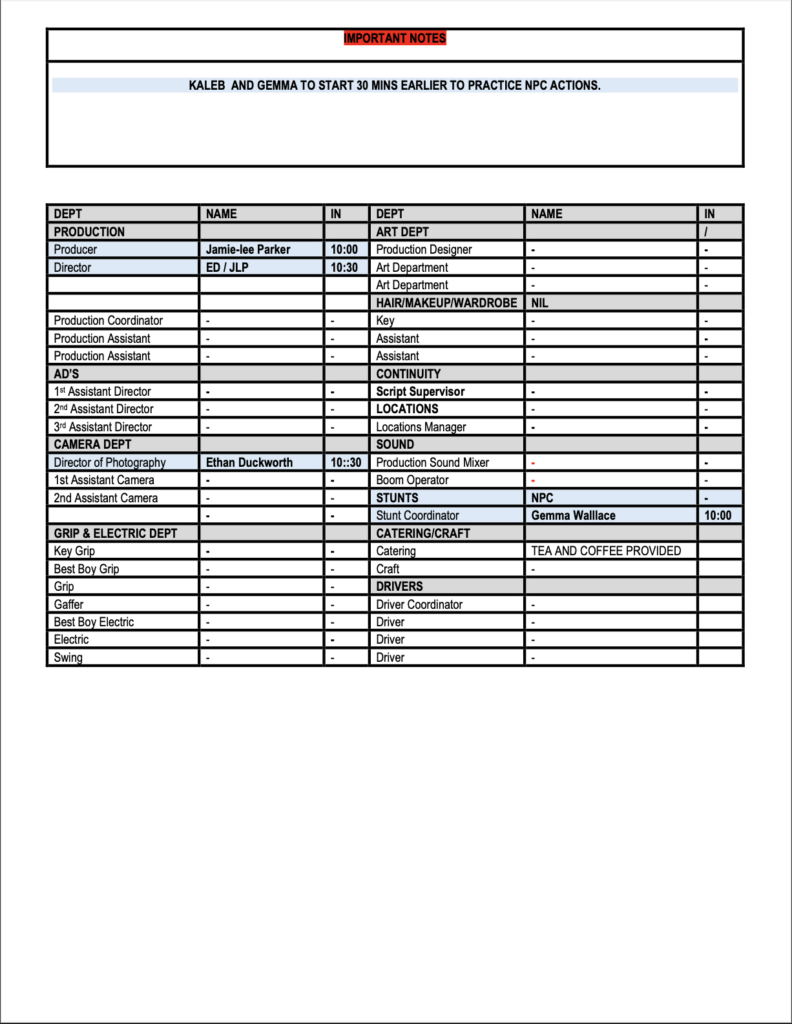
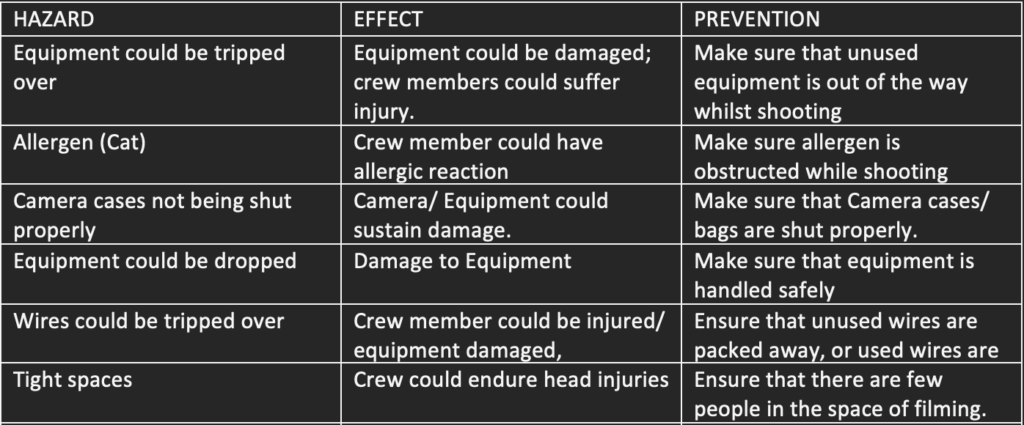
Prior to this, we both approached Jemma Wallace (the Interviewer) to play the person presenting the ‘documentary’. She and Jamie-Lee had worked together previously on a short film in which Jamie-Lee produced and Jemma acted in the lead role. She would be interviewing Kaleb’s mum (played by Jamie Lee) and Kaleb respectively. Jemma also works in the gaming industry in motion capture and as a voice artist, due to this she was able to provide stunt coordination for Kaleb when in his trance. I also played two parts within the mockumentary, the camera operator who comments on Kaleb when acting up and Eddie Boon, the video game designer who attempts to snap Kaleb out of his trance.
We decided not to create a storyboard as we felt it wasn’t necessary since we had both constructed the shot list. Due to a small crew and short film, this didn’t effect the shoot. Although this would create much difficulty during a larger production as storyboards are generally essential when making a film, as they aid in the visualisation of the shots. Sometimes the film can deter from the storyboard, which is quite common, however it is still important to stick to both the storyboard and the shot list as it keeps the entire crew on track.
Bibliography
Anderson-Moore, O. (2023) Nichols’ 6 modes of documentary might expand your storytelling strategies, No Film School. Available at: https://nofilmschool.com/6-modes-of-documentary (Accessed: 21 February 2024).
Dormehl, L. (2012) ‘The Hammer and the Mirror: An Essay on Documentary and Truth’, in A Journey Through Documentary Film. Harpenden, UK: Kamera, pp. 11–30.
Jenkins, A.P. (2023) Types of documentary: A comprehensive guide, Brilliantio. Available at: https://brilliantio.com/types-of-documentary/ (Accessed: 29 February 2024).
Renov, M. (2007) ‘Away From Copying: The Art of Documentary Practice’, in Truth or dare : art and documentary . Bristol, UK: Intelect, pp. 13–24.
